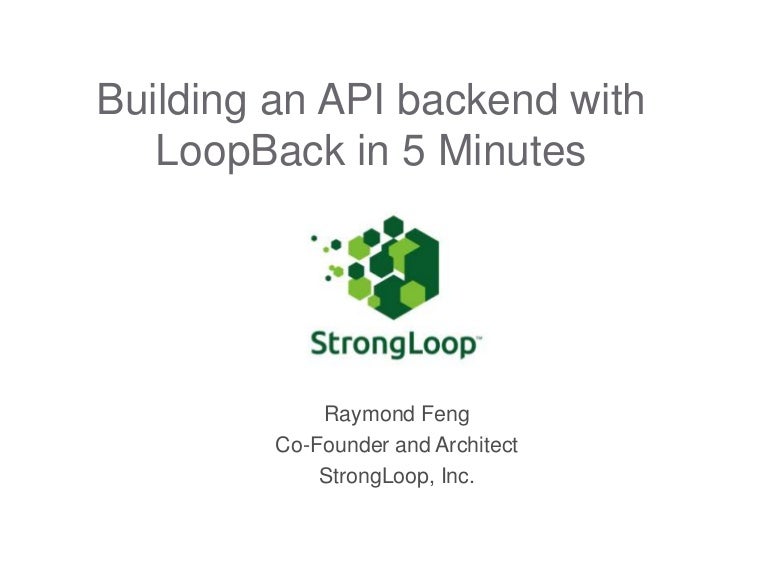

In order to do so you need toĭownload and install a Redis client library for your programming language. The goal is to use it from your application. Of course using Redis just from the command line interface is not enough as After the firewall is in place, try to connect with redis-cli from an external host in order to prove yourself the instance is actually not reachable. Note that a Redis instance exposed to the internet without any security is very simple to exploit, so make sure you understand the above and apply at least a firewall layer.
#LOOPBACK JS SOFTWARE#
Use spiped or another SSL tunneling software in order to encrypt traffic between Redis servers and Redis clients if your environment requires encryption.Use the requirepass option in order to add an additional layer of security so that clients will require to authenticate using the AUTH command.For example only the loopback interface (127.0.0.1) if you are accessing Redis just locally from the same computer, and so forth. Use a configuration file where the bind directive is set in order to guarantee that Redis listens on only the network interfaces you are using.
#LOOPBACK JS PLUS#

This protocol is implemented in the Redis client libraries for the different programming languages. Explore Redis using the CLIĮxternal programs talk to Redis using a TCP socket and a Redis specific protocol. Once you have Redis up and running, and can connect using redis-cli, you can continue with the steps below.
#LOOPBACK JS HOW TO#
You'll learn how to install, run, and experiment with the Redis server process. $ npm uninstall -g strongloop $ npm cache clear $ npm install -g strongloop.This is a guide to getting started with Redis.To install the LoopBack command-line interface (CLI) tool, enter the command: The project comes with a "ping" route to test the project. The LoopBack 4 CLI is a command-line interface that can scaffold a project or extension.

It saves development time, and comes with a lot of functionality built in. If your application can be broken down into model like entities, then you should go with loopback in my opinion. Built on top of Express, it can take a data model definition and easily generate a fully functional end-to-end REST API that can be called by any client.

LoopBack is a framework for creating APIs and connecting them with backend data sources.


 0 kommentar(er)
0 kommentar(er)
